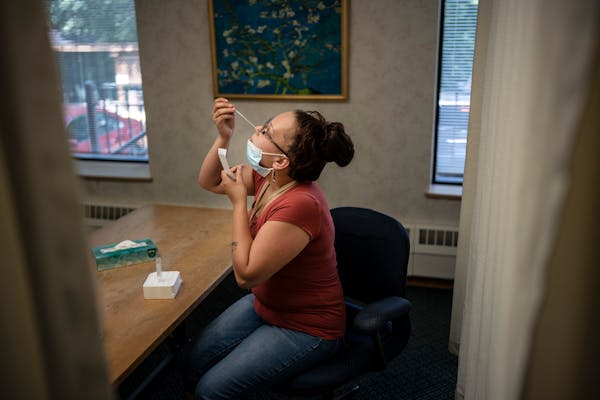Minnesota clinics stepped up cancer screenings and management of diseases such as depression and diabetes in 2021, but a new report card shows they remain behind pre-pandemic levels of patient care.
MN Community Measurement on Thursday lauded nine clinic groups for outperforming others on statistical measures of care and encouraged the rest of the state to catch up.
If all clinics operated at the level of top-performers in the management of asthma, for example, the organization estimated an additional 22,883 Minnesotans would be breathing better and avoiding flareups that require hospital and ER visits.
"The answers are always different. There isn't a one-size-fits-all way to do it, and clinics have different patient populations that they deal with," said Julie Sonier, president of the nonprofit measurement organization. "But one common key is sort of staying in touch and reaching out" to keep patients up to date.
Top-performing clinic groups included large systems such as Essentia Health in northern Minnesota, CentraCare in central Minnesota, and HealthPartners in the Twin Cities — which scored above average on 13 of 21 measures. However, the high scores for Mankato Clinic and Entira Family Clinics in the east metro showed that smaller groups are capable, Sonier said.
Declines in clinical care were expected with the onset of the COVID-19 pandemic in 2020, when providers canceled routine medical appointments to preserve medical supplies and prevent the transmission of the coronavirus. Even after clinics reopened, many patients stayed away because of COVID-19 fears.
Optimal osteoporosis care is measured by whether clinics provided bone mineral density scans or appropriate preventive medication to elderly women within six months of fractures. Nearly 32% of such patients received optimal care in 2018, but that rate dropped to 20% in 2020, before returning to 30% in 2021.
Clinics reported their own outcomes last fall, and those results were combined with new data from insurance companies to identify the top performers. Patients can look up scores for their individual clinics at mncm.org/mnhealthscores.
HealthPartners made progress once it was able to redeploy nurses and others who had been temporarily assigned to COVID-19 testing in 2020 and vaccinations in 2021, said Dr. Beth Averbeck, HealthPartners' senior medical director for primary care. Patients had received extended prescription refills early in the pandemic, allowing them to skip checkups, but clinics made a concerted effort to get them back.
"We try and use every visit as an opportunity to address any kind of care gaps, any kind of needed services," Averbeck said.
Virtual appointments also became popular for managing chronic conditions, such as depression, Averbeck said. About 15% to 18% of HealthPartners' total clinic appointments are now virtual.
HealthPartners' was above average in 2021 on two depression measures — the rate of patients screened 12 months after their diagnoses, and the percent who reported remission of symptoms.
Top-performing clinics reported remission in 14% of depressed patients in 2021 compared with the state average of 10%. Closing that gap would mean an additional 4,442 patients without depressive symptoms, MN Community Measurement estimated.

Baseball Metro Player of the Year packs up his five tools and leaves

Prep baseball 2024: 35 Minnesota stars who the recruiters covet
Police searching for St. Paul home intruder who raped, robbed woman

Friend heard money, relationship woes from man tied to Chanhassen killing who took his own life

